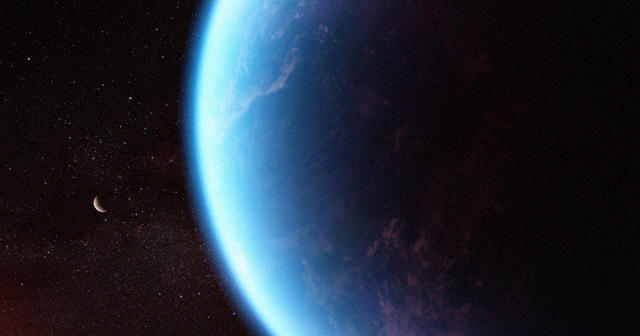The discovery of a molecule on a distant world by the JWST reveals that it can only be produced by living organisms.
Researchers recently announced a captivating discovery using the James Webb Space Telescope, as detailed in an upcoming publication in The Astrophysical Journal. They have identified a distinct chemical signature in the atmosphere of the remote exoplanet K2-18 b.
This signature is linked to a molecule known as dimethyl sulfide (DMS), which is typically only produced by living organisms on Earth.
However, it is important to approach this finding with caution, as the detection is still considered provisional. Despite the impressive capabilities of the JWST in identifying molecules like carbon dioxide and methane, the presence of DMS is currently categorized as “possible.” Further data collection and analysis are required to validate its existence in the exoplanet’s atmosphere.
Similar situations of initial excitement followed by careful reassessment have occurred in the past, such as the reported observation of phosphene in Venus’s atmosphere a few years ago. Although the potential sign of life on Venus was eventually dismissed, it highlights the significance of thorough verification.
Similarly, the discovery of DMS on K2-18 b demands meticulous examination, especially since this planet, with its previously detected water vapor and now DMS, aligns with conditions suitable for hosting life forms.
K2-18 b, roughly 8.6 times the mass of Earth and classified as a sub-Neptune planet, has piqued scientific interest due to its unique characteristics. Despite the inability to directly image the planet, its properties, including mass estimates and chemical signatures, offer valuable insights.
Current theories suggest that K2-18 b is a Hycean world, characterized by a temperate ocean and a hydrogen-rich atmosphere. Located in the habitable zone of its star system, it offers ideal conditions for potential life.
Nonetheless, scientists stress the importance of exploring all possible explanations before considering the existence of extraterrestrial life. The vastness and diversity of the universe necessitate thorough investigation and verification processes.
Despite this, the discovery of DMS highlights the impressive observational capabilities of the JWST. Nikku Madhusudhan, the study’s lead author, praises the telescope’s extended wavelength range and unparalleled sensitivity, which facilitated the precise detection of spectral features.
By studying transit observations, where a planet crosses in front of its host star, researchers can analyze the starlight passing through the exoplanet’s atmosphere to determine its chemical composition. The effectiveness of JWST observations surpasses previous techniques, providing insights into the atmospheres of distant planets.
Although the ultimate objective is to identify life on habitable exoplanets, Madhusudhan recognizes that the journey towards this goal is ongoing. Each new discovery, such as the detection of DMS on K2-18 b, enhances our knowledge of Hycean worlds and our position in the cosmos.
The possibility of confirming life beyond Earth is exciting, but it demands patience and thorough examination. Only time and additional observations will unveil the true nature of this remote world and its potential inhabitants.
Do not forget to share your opinion with us to provide you with the best posts !




0 Comments